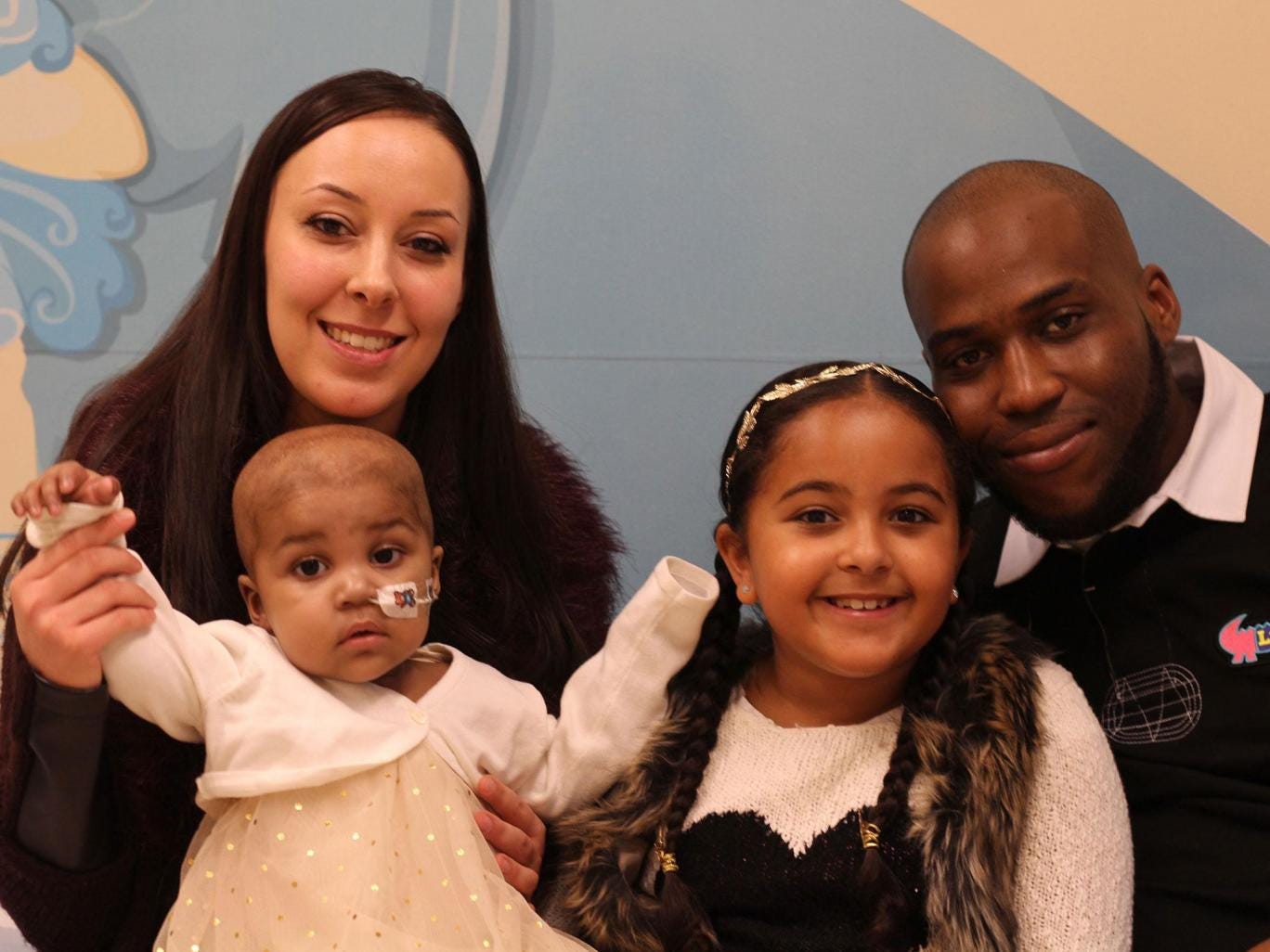Modern Medical Miracles
"Doctors don't want to say that 'there's nothing we can do' and offer palliative care, but sometimes that's the only option. We didn't want to ... give up on our daughter. So we asked the doctors to try anything. We had to do something."
"What is that [the new treatment offered] going to do when bags and bags of chemo haven't worked?"
"I thought it was bad news [when her husband called], but then he said, 'It worked', and I just cried happy tears."
"I consider ourselves lucky that we were in the right place at the right time to get a vial of these cells. Hopefully Layla will stay well and lots more children can be helped with this new treatment."
Lisa Foley, London, England
"It's very exciting but it is early days. There clearly needs to be long-term clinical studies with more patients [to validate the approach]. We need to understand who responds and who doesn't, and what the long-term results are."
Matt Kaiser, head researcher, Bloodwise, British charity
"We thought that the little bit of liquid in the syringe was nothing [injecting his daughter with a one-millilitre vial of cancer-fighting cells]."
"Even though she is well at the moment, we still don’t know what the future holds."
"She will still have monthly bone marrow checks for now and might be on some medicines for the rest of her life."
Ashleigh Richards
 |
| Layla Richards with her parents, Lisa Foley and Ashleigh Richards, and her sister, Reya -- PA |
"As this was the first time that the treatment had been used, we didn’t know if or when it would work and so we were over the moon when it did. "Now a year old, Layla Richard has been given treatment for acute lymphoblastic leukemia since the age of fourteen weeks. She has had dire experiences few children are afflicted with at her young age. Chemotherapy for one, being flown across Britain in vain attempts to determine whether experimental procedures might help, for another. She had bone marrow transplants and innumerable blood tests, all accounting for her one year of life in intensive care units. And the cancer remained.
“Her leukaemia was so aggressive that such a response is almost a miracle."
Professor Paul Veys, director of bone marrow transplant, Great Ormond Street Hospital, London
"We have only used this treatment on one very strong little girl, and we have to be cautious about claiming that this will be a suitable treatment option for all children."
"But, this is a landmark in the use of new gene-engineering technology and the effects for this child have been staggering. If replicated, it could represent a huge step forward in treating leukaemia and other cancers."
Waseem Qasim, professor of cell and gene therapy, UCL Institute of Child Health
When her desperate parents, refusing to believe there was nothing more that medical science could offer to save their child's life, pleaded that something, anything more be done, doctors turned to an experimental therapy never before attempted on other than a laboratory mouse. It was not really expected that this new experimental procedure would have an effect on the child's condition and they prepared her parents for that eventuality, even that she might become even more ill.
Layla now is known within the worldwide medical community as the first human being to be treated for cancer with the use of "designer immune cells", as the situation was laid out in an article in Nature, noting the method had previously been tried on HIV patients. And now, Layla has remained cancer free for several months, and the hope is that time will prove her to have been cured by this new serendipitous experimental process.
The treatment itself relates to the editing of genes to prepare the immune cells into which those edited genes where molecular 'scissors' have altered, to be inserted into the cancer patient, they are the body's first line of defence against foreign invasion, which cancer certainly is. The point is to make the immune cells with the edited genes hunt and destroy the cancer. Doctors envision a future where a vial of genetically engineered immune cells would routinely be injected into a patient, resulting in a microscopic war against implacable cancers.
The particular therapy that has proven thus far successful for Layla was developed by researchers at Great Ormond Street Hospital and University College London's Institute of Children's Health, along with the biotech company Cellectis. A bank of pre-engineered, generic T-cells was developed from healthy donors. A genome-editing tool was used to cut the T-cells rendering them impervious to leukemia drugs which would otherwise kill them. New programming directing them to hunt down and fight cancer was pasted into the altered T-cells.
(T-cells are the immune cells that fight off cellular abnormalities and infections, as well as any foreign bodies that the immune cells don't recognize as belonging to the body they protect.) Editing represents a method of prevention against donor cells attacking what else they come across (such as the patient's own cells). The "designer cells" can be contained in vials and shipped out to doctors prepared to inject them into patients whose bodies have been invaded by severe cancers.
It was the first of these "off the shelf" donor T-cells, called UCART19, still in the testing phase, which were injected into Layla. And then the family waited anxiously for results. Nothing appeared to be happening, and the child's parents prepared to spend the last of the time they had left with her before losing her forever. When a rash appeared, it represented a sign Layla's body was responding to the foreign cells infused into her.
Labels: Britain, Child Welfare, Disease, Family, Health, Medical Technology

0 Comments:
Post a Comment
<< Home